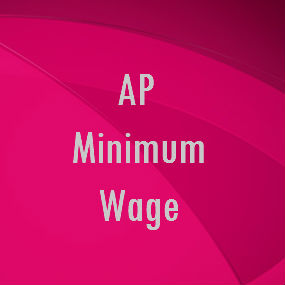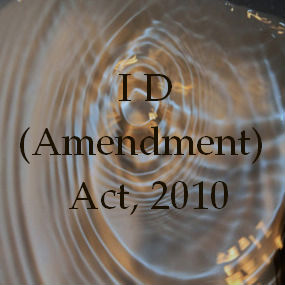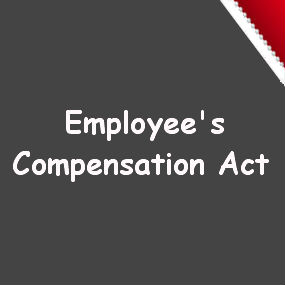- Provident Fund benefits
- Employer also contributes to Members PF @ 3.67% (1.67% in case of sick industry - eg: beedi)
- EPFO guarantees the Employer contribution and Govt. gives a decent interest to PF accumulations
- Member can withdraw from this accumulations to cater financial exigencies in life - No need to refund unless misused
- On resignation, the member can settle the account. i.e., the member gets his PF contribution, Employer Contribution and Interest.
- Pension Benefits
- Pension to Member
- Pension to Family (on death of member)
- Scheme Certificate
- This Certificate shows the service & family details of a member
- This is issued if the member has not attained the age of 58 while leaving an establishment and he applies for this certificate
- Member can surrender this certificate while joining another establishment and the service stated in the certificate is added with the service he is gaining from the new establishment.
- After attaining the age of 50 or above, the member can apply for Pension by surrendering this scheme certificate (if total service is atleast 10 years)
- This is a better choice than Withdrawal Benefit, as a member dies holding a valid scheme certificate, his family will get pension (Death when NOT in service)
- Withdrawal Benefit
- if not eligible for pension, member may withdraw the amount accumulated in his pension account
- the calculation of this amount is based only on (i) Last average salary and (ii) Service (Not based on actual amount available in Pension Fund Account)
- No amount is taken from Member to give Pension to the Member. Employer and Govt. contributes to Pension fund @8.33% and @1.16% respectively
- EPFO guarantees pension to members, even if the Employer has not contributed to Pension Fund.
- Pension calculation is similar to that of Govt. Employee.
- Death Benefits
- Provident Fund Amount to Family (or to Nominee)
- Pension to Family (or to Parent / Nominee)
- Capital Return of Pension
- Insurance (EDLI) amount to Family (or to Nominee)
- No amount is taken from Member for this facility. Employer contributes for this.
- Nominee is basically determined as per the information submitted by the member at this office through FORM-2
Benefits to Members under EPF schemes
Frequently Asked Questions.
Account head | Employee's share | Employer's share | ||
A/c No. I (EPF Contribution) | 12.00% | 10% | 3.67% | 1.67% |
A/c No. II (EPF Administration Charges) | 1.10% | 1.10% | ||
A/c No. X (EPS Contribution) | 8.33% | 8.33% | ||
A/c No. XXI (EDLI Contribution) | 0.5% | 0.5% | ||
A/c No. XXII (EDLI Administrative Charges) | 0.01% | 0.01% | ||
Total | 12.00% | 10.00% | 13.61% | 11.61% |
Retuns to be filed by the Employer
| Form No | Due Date | Details to be filled up | Remarks |
| Initial Returns to be filed on receipt of Coverage notice | |||
| Form 5A | Immediately on receipt of coverage notice | Name of the establishment, its legal set up (ie. Company / Partnership/ Proprietorship / Society etc.), Name of owner/occupier, name of the person responsible for the day-to-day affairs of the establishment etc duly signed by the employer. | Fresh Form-5A is required when there is change of ownership or legal set up of the establishment |
| Form 9 | Within 15 days of receipt of coverage notice | This form is available in a book format. Two copies to be filled. One copy to be submitted to EPF Office and one copy to be retained by the employer. The details of employees enrolled upto the date of submission of this form to EPF office to be filled up. | The details of the persons subsequently enrolled are to be informed to EPF Office through Form-5 and the office will update the information. The employer is required to keep his copy of Form-9 also updated. |
| Form 2 | Within 15 days of receipt of coverage notice for all the employees on roll. For the employees subsequently joining, the Form is to be sent along with Form-5 | Details of nominee / family members of the employee. All the columns should be filled up with one ink and no correction is allowed. | This form is very important to avoid disputes in case of death of an employee. Therefore, proper care should be taken in filling up the form and sending it to EPF Office in time. |
| Monthly returns | |||
| Form 12A | 25th of the subsequent month (i.e. the due date for the wage month of October is 25th Nov) | This is a consolidated information of a particular month. The total number of employees on roll, additions/deletions during the month, the wages and contribution under each Scheme and date of remittance |
|
| Form 5 | 15th of the subsequent month (i.e. the due date for the wage month of October is 15th Nov) | Details of employees newly enrolled during the month. The details to include the previous service also. | Employer to update his copy of Form-9 with the details. Form-5 should invariably accompanied by Form-2 (nomination form) |
| Form 10 | 15th of the subsequent month (i.e. the due date for the wage month of October is 15th Nov) | Details of employees left service during the month. | Employer to update his copy of Form-9 with the details. |
| Triplicate copy of chalan | 15th of the subsequent month (i.e. the due date for the wage month of October is 15th Nov). | No of employees, wages, contribution and charges under each Scheme calculated separately | Contribution to be remitted in State Bank of India on or before 15th. |
| Annual Returns | |||
| Form 3A | 30th April every year | Monthly wages and Contribution (employees and employer) | One form for each employee. Form 3A in respect of employees applying for settlement during the year to be submitted along with claim form |
| Form 6A | 30th April every year | Consolidation of Form 3A | Details of employees who settled their accounts during the year also to be furnished with appropriate remark. |









